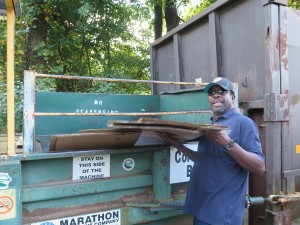
There are three types of recycling, each with their own pros and cons:
[tabs slidertype=”simple”] [tab]
All-In-One: All trash and recyclables are disposed of in one container with no separation. This material then proceeds to a sorting facility to sort out the recyclables.
- Pros: Requires no active participation from the user and is the most convenient.
- Cons: The potential for contamination is extremely high, due to co-mingling with trash, and contaminated materials require extra processing or are rejected and sent to landfills.
[/tab] [tab]
Single Stream: All recyclables, regardless of type, are disposed of in a container separate from the trash. The recyclables proceed to a sorting facility where they are sorted by type.
- Pros: Recycling is more convenient because all recyclable materials go into one container.
- Cons: The quality of the material can be degraded due to contamination, meaning some or all materials could be unrecyclable and sent to landfills.
[/tab] [tab]
Source Separated: Recyclables are sorted by type when discarded directly at the facility.
- Pros: Materials from source separated recycling are generally higher in quality, because there is less contamination.
- Cons: Requires more effort by the user to either leave sorted items at their curb or take them to a drop-off site.
[/tab] [/tabs]
McIntire Recycling Center is a Source Separated Facility and because of this, it is able to maintain a 99% recycling rate.
- Plastic bags are taken to the Trex company in Winchester, VA.
- Metals are taken to Gerdau in Charlottesville, VA
- Glass is taken to Strategic Materials in Durham, NC
- Plastics 1-7 (bottles and containers), corrugated cardboard, mixed brown paper, phone books, and file stock are taken by Sonoco Recycling to several sites in Virginia
Source separation takes more effort on the part of the citizen, but the benefit is vast. With continued active participation by the community, Rivanna Solid Waste Authority can maintain a high recycling rate to ensure all materials brought to the Center end up at recycling facilities instead of in a landfill.
For more information:
